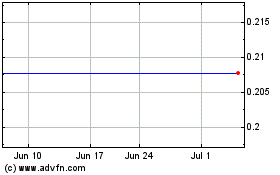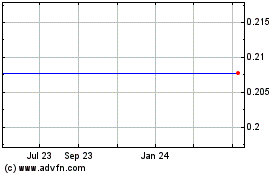Cytori Therapeutics, Inc. (NASDAQ:CYTX) announced today that the
American Medical Association’s (AMA) CPT® (Current Procedural
Terminology) Editorial Panel has approved the company’s request to
add two new Category III CPT codes that describe a cell-based
therapy for patients with scleroderma of the hands. These codes
have been published on the AMA website and will be effective
January 1, 2018.
The AMA’s CPT® Editorial Panel creates Category III CPT codes to
describe new and emerging healthcare technology, services, and
procedures. Cytori worked with the American College of
Rheumatology, the American Society of Plastic Surgeons, and the
American Society for Surgery of the Hand to prepare the requests
and received approval for the following Category III CPT codes:
- 0489T, for autologous adipose-derived regenerative cell (ADRC)
therapy for scleroderma in the hands; adipose tissue
harvesting, isolation and preparation of harvested cells
including incubation with cell dissociation enzymes, removal of
non-viable cells and debris, determination of concentration and
dilution of regenerative cells
- 0490T, for autologous ADRC therapy for scleroderma in the
hands; multiple injections in one or both hands
“We applaud the Editorial Panel’s approval of these two new CPT
codes, as it marks the essential first step in enabling physician
and facility access to our investigational Habeo™ Cell Therapy in
the U.S.,” said Russ Havranek, Vice President, Global Marketing at
Cytori. “We are also thankful for the support provided by the
medical specialty societies in helping us achieve this important
milestone.”
Cytori is currently conducting the U.S. Phase III pivotal STAR
trial, a randomized, double-blind, placebo-controlled,
parallel-group, multi-center study investigating the safety and
efficacy of Habeo™ Cell Therapy in patients with hand dysfunction
due to scleroderma. STAR follows the 12-patient SCLERADEC-I trial,
an open-label, single-arm, investigator-initiated study conducted
in Marseille, France. More information about STAR and
SCLERADEC-I can be found on clinicaltrials.gov and
sciencedirect.com, respectively.
“Scleroderma with hand dysfunction is an extremely debilitating
disease, and yet patients historically have had very limited
treatment options,” said Dinesh Khanna, M.D., M.S., the Frederick
G.L. Huetwell Professor of Rheumatology, Professor of Internal
Medicine, and Director of the Scleroderma Program at the University
of Michigan, and principal investigator in the Phase III STAR trial
of Habeo™ Cell Therapy in patients with hand dysfunction due to
scleroderma. “Habeo™ Cell Therapy is a novel treatment with
the potential to make a significant impact in these patients’
lives. I am encouraged by the clinical evidence generated to
date and look forward to reviewing the STAR 48-week results.”
“The codes approved by the Panel accurately describe Habeo™ Cell
Therapy,” said STAR investigator Mark Granick, M.D., Professor of
Surgery and Chief of Plastic Surgery in the Department of Surgery
at Rutgers New Jersey Medical School. “The use of ADRCs for
treating scleroderma related hand dysfunction requires far more
specificity and effort than the more commonly performed liposuction
or fat grafting procedures. The injection of the ADRC
solution into the fingers similarly is a highly specialized
process requiring a familiarity with hand anatomy
and surgery.”
About Scleroderma Scleroderma is a rare
and chronic connective tissue disease generally classified as an
autoimmune rheumatic disorder. The word “scleroderma” is derived
from two Greek words: “sclera,” which means hard, and “derma,”
meaning skin, as hardening of the skin is one of the most visible
manifestations of the disease. An estimated 300,000 Americans have
scleroderma, about one-third of whom have the systemic form of the
disease (also known as systemic sclerosis, or SSc), which affects
the skin, subcutaneous tissues, blood vessels, and major
organs.2
The hand manifestations of scleroderma, which result from
vascular disease (ischemia, or lack of blood supply to a body part)
and fibrosis (scarring), are extremely common and lead to
functional impairment and diminished quality of life. Hand
involvement may present as digital ulcers (skin breakdown at or
near the fingertip, resulting in painful ulcers that are difficult
to heal), Raynaud's phenomenon (RP, skin discoloration resulting
from narrowing of the blood vessels in response to cold, emotional
upset, or stress), calcinosis (calcium deposits in the soft tissues
of the hand), swelling or puffiness of the hands, joint pain and
stiffness, and sclerodactyly, which literally means “hard skin of
the digits,” and is characterized by shiny, tight skin on the
fingers. RP affects more than 90% of patients with SSc, and
may precede SSc by months or even years. 1,2
The initial treatment approach for RP is to keep digits clean
and protect them from the cold. Although physicians may use various
types of medications, such as calcium channel blockers, intravenous
prostacyclin, and non-selective endothelin receptor antagonists, to
treat the hand manifestations of scleroderma, these agents are
costly, have very limited benefit, require close monitoring, and
may trigger substantial adverse events. Consequently, there is a
distinct medical for a safe and effective therapy to address
scleroderma-related hand dysfunction.1
About Cytori Therapeutics
Cytori is a therapeutics company developing regenerative and
oncologic therapies from its proprietary cell therapy and
nanoparticle platforms for a variety of medical conditions.
Data from preclinical studies and clinical trials suggest that
Cytori Cell Therapy™ acts principally by improving blood flow,
modulating the immune system, and facilitating wound repair.
As a result, Cytori Cell Therapy™, investigational in the U.S., may
provide benefits across multiple disease states and can be made
available to the physician and patient at the point-of-care through
Cytori’s proprietary technologies and products. Cytori
Nanomedicine™ is developing liposome encapsulated therapies for
regenerative medicine and oncologic indications. For more
information, please visit www.cytori.com.
Cautionary Statement Regarding Forward-Looking
Statements
This press release includes forward-looking statements regarding
events, trends and business prospects, which may affect our future
operating results and financial position. Such statements,
including, but not limited to, statements regarding availability
and timing of the Habeo™ Cell Therapy Early Access Program are
subject to risks and uncertainties that could cause our actual
results and financial position to differ materially. Some of these
risks and uncertainties include: risks in development, manufacture
and commercial launch of Cytori’s Habeo™ Cell Therapy product;
risks in the conduct of clinical trials, including STAR and
SCLERADEC-II; risks associated with potential benefits of our
Cytori’s Habeo™ Cell Therapy product; risks in the collection and
results of clinical data; risks associated with development of our
clinical pipeline; final clinical outcomes; regulatory risks and
uncertainties; risks related to dependence on third party
performance; and other risks and uncertainties described under the
"Risk Factors" section in Cytori's Securities and Exchange
Commission Filings on Form 10-K and Form 10-Q. Cytori assumes
no responsibility to update or revise any forward-looking
statements contained in this press release to reflect events,
trends or circumstances after the date of this communication.
1 http://www.scleroderma.org
2
https://www.niams.nih.gov/health_info/scleroderma/scleroderma_ff.asp#b
Cytori Therapeutics, Inc.
Tiago Girao, 1-858-458-0900
ir@cytori.com
Cytori Therapeutics (NASDAQ:CYTX)
Historical Stock Chart
From Mar 2024 to Apr 2024

Cytori Therapeutics (NASDAQ:CYTX)
Historical Stock Chart
From Apr 2023 to Apr 2024
